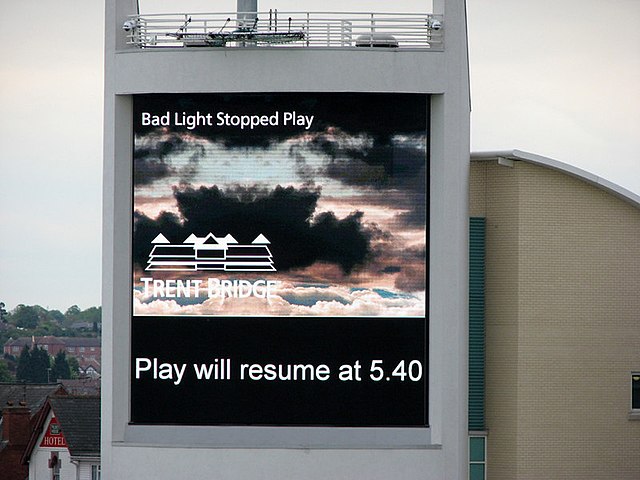Duckworth–Lewis–Stern method
The Duckworth–Lewis–Stern method (DLS) is a mathematical formulation designed to calculate the target score for the team batting second in a limited overs cricket match interrupted by weather or other circumstances. The method was devised by two English statisticians, Frank Duckworth and Tony Lewis, and was formerly known as the Duckworth–Lewis method (D/L). It was introduced in 1997, and adopted officially by the ICC in 1999. After the retirement of both Duckworth and Lewis, Steven Stern became the custodian of the method, which was renamed to its current title in November 2014.
A rain delay at The Oval, England
Scoreboard at Trent Bridge indicating that bad light has stopped play.
Scoreboard showing ball-by-ball D/L Par Score.
Many stadium scoreboards do not carry information about par scores during games
Limited overs cricket, also known as one-day cricket or white ball cricket, is a version of the sport of cricket in which a match is generally completed in one day. There are a number of formats, including List A cricket, Twenty20 cricket, and 100-ball cricket. The name reflects the rule that in the match each team bowls a set maximum number of overs, usually between 20 and 50, although shorter and longer forms of limited overs cricket have been played.
A one-day match at Bellerive Oval
Chennai hosted an ODI match between India and New Zealand in 2010. The New Zealand batsman is in black, and India in blue are the fielding team.






